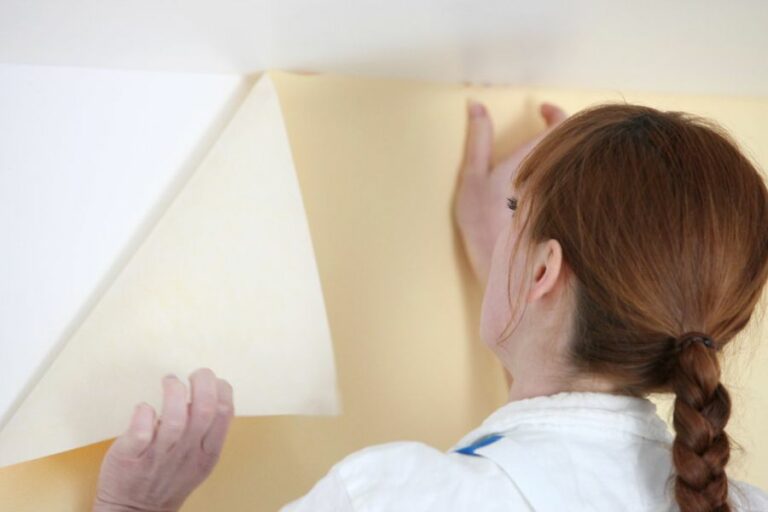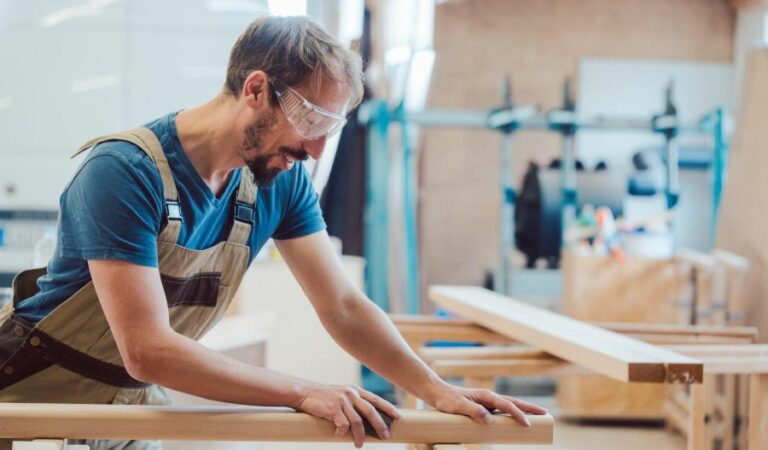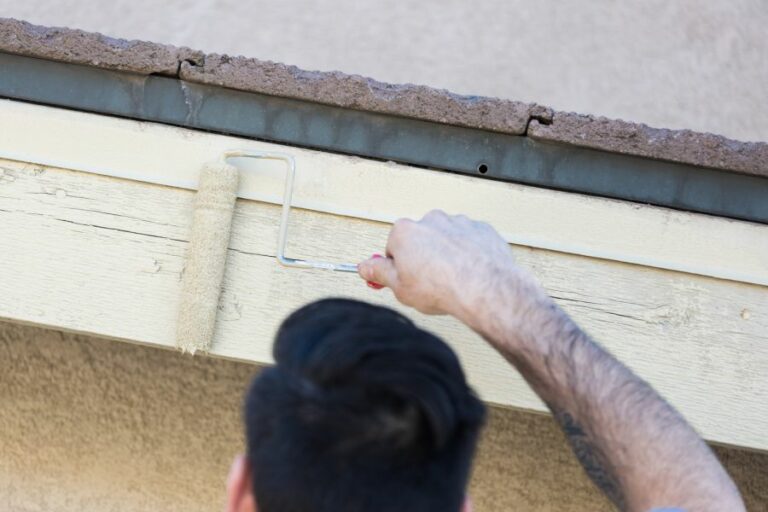Understanding Surface Prep Abrasive Types. What Pros Say
When it comes to surface preparation, selecting the right abrasive material is crucial for achieving optimal results. With a myriad of abrasive types available, it can be a daunting task to determine the most suitable option for your specific project. Fear not, as we are here to break down and simplify the complex world of surface prep abrasives, guiding you to make the most informed decision.
Understanding surface prep abrasive types:
Surface preparation is vital in industries like construction, automotive, and aerospace. Various abrasives used for surface preparation include aluminum oxide, silicon carbide, garnet, steel shot and grit, and glass beads. Selecting the right abrasive depends on factors such as substrate material, desired surface profile, environmental impact, and cost. Proper abrasives ensure quality and durability of coatings and finishes.

Discover the various surface prep abrasive types that are crucial in achieving a smooth, long-lasting finish. Delve deeper into their properties, industry applications, and how to choose the right abrasive for your project. Keep reading to enhance your knowledge and improve your surface preparation skills!
Contents
- 1 Exploring Various Abrasive Types for Surface Preparation
- 2 Diverse Methods for Surface Preparation: An Overview
- 3 Comparing SA 2.5 and SA 3: Key Differences Explained
- 4 Delving into SA 2.5 Surface Preparation Techniques
- 5 An Introduction to Surface Preparation and Its Various Methods
Exploring Various Abrasive Types for Surface Preparation
Surface preparation is a crucial step in various industries, such as construction, automotive, and aerospace. Proper surface preparation plays a significant role in ensuring the quality and durability of coatings and finishes.
One of the essential components of surface preparation is choosing the correct abrasive type.
• What are Abrasives?
Abrasives are materials used to remove surface contaminants, such as rust, paint, and other impurities, and to achieve a specific surface profile or texture.
Abrasives come in various types and sizes, and it is important to understand their characteristics to identify the most appropriate abrasive for a given surface preparation task.
• Types of Abrasives
There are numerous abrasive types, and each has its unique characteristics and applications. Let us explore some of the most common surface prep abrasive types:
1. Aluminum Oxide
Aluminum oxide is a synthetic abrasive that is widely used for metal and wood surface preparation. It is a hard and durable abrasive suitable for aggressive cutting and grinding tasks. Some of the key advantages of using aluminum oxide include:
- Versatility: Aluminum oxide is compatible with various surface preparation applications, such as grinding, deburring, rust removal, and blending.
- Cost-effective: Aluminum oxide offers an excellent balance between performance and cost, making it a popular choice among professionals.
- Reusable: Aluminum oxide is a reusable abrasive that can be employed multiple times before losing its efficiency.
I recommend using aluminum oxide for surface preparation tasks that require a robust and versatile abrasive. Moreover, you can also use it for the final finish on wood surfaces before applying varnish or paint.
2. Silicon Carbide
Silicon carbide is another synthetic abrasive known for its hardness and sharpness. It is an ideal choice for tasks that demand quick cutting and precise profiling. Some of the benefits of using silicon carbide include:
- High cutting speed: Silicon carbide is an excellent option when a rapid cutting rate is desired.
- Precision: The sharpness of silicon carbide particles makes it suitable for achieving precise surface profiles.
- Non-ferrous materials: Silicon carbide is perfect for surface preparation of non-ferrous materials, such as aluminum, brass, and titanium.
I recommend using silicon carbide for surface preparation tasks involving non-ferrous materials and where precision and speed are essential.
3. Garnet
Garnet is a natural abrasive that offers a good balance between performance and cost. It is commonly used for waterjet cutting and sandblasting applications. Some of the advantages of using garnet include:
- Environmental-friendly: Garnet is a natural and eco-friendly abrasive option.
- Low-dusting: Garnet produces minimal dust during surface preparation, which improves visibility and safety.
- Multi-purpose: Garnet is suitable for various applications, such as roughening, etching, and cleaning surfaces.
I recommend using garnet for surface preparation tasks that demand an eco-friendly abrasive option and low dust production.
4. Steel Shot and Grit
Steel shot and grit are metallic abrasives widely used for aggressive surface preparation tasks, such as blast cleaning and surface profiling. Some of the benefits of using steel shot and grit include:
- Aggressive cleaning: Steel abrasives are ideal for tasks that demand high power and rapid surface cleaning.
- Reusable: Steel shot and grit can be reused multiple times, reducing operational costs.
- Surface profiling: These abrasives are excellent for achieving the desired surface profile prior to coating and painting.
I recommend using steel shot and grit for aggressive surface preparation tasks and where reusable abrasives are preferred.
5. Glass Beads
Glass beads are a popular abrasive choice for surface preparation tasks that require gentle cleaning and finishing. Some of the key advantages of using glass beads include:
- Gentle cleaning: Glass beads effectively remove surface contaminants without damaging the underlying substrate.
- Surface finishing: Glass beads can create a satin, matte, or bright finish on various surfaces.
- Reusable: Glass beads are reusable, which helps in cost reduction.
I recommend using glass beads for surface preparation tasks where preserving the substrate’s integrity and achieving a desired surface finish are crucial.
• Choosing the Right Abrasive Type
Selecting the appropriate abrasive type is critical to obtaining the desired surface preparation results. Some factors to consider when choosing the right abrasive type include:
- Substrate material: Choose an abrasive compatible with your substrate material to avoid potential damage or inadequate cleaning.
- Surface profile: Identify the desired surface profile and choose an abrasive capable of achieving that particular outcome.
- Environmental impact: Opt for eco-friendly abrasives, such as garnet or glass beads, for a reduced environmental footprint.
- Cost: Consider the balance between cost and performance when selecting the ideal abrasive for your application.
Moreover, always adhere to the recommended safety practices and guidelines when using abrasives for surface preparation tasks.
In conclusion, understanding surface prep abrasive types is essential for a successful surface preparation process. The choice of abrasive depends on the substrate material, desired surface profile, environmental impact, and cost considerations.
By choosing the correct abrasive, you can achieve optimal results and ensure the longevity and quality of the coatings and finishes applied afterward.
Abrasive Type | Description | Common Uses |
|---|---|---|
Garnet | Mineral abrasive made from crushed garnet stones; comes in a variety of mesh sizes. | Surface preparation, waterjet cutting, and sandblasting. |
Steel Shot & Grit | Shot is spherical in shape; grit is angular. Made from high-quality steel materials. | Surface cleaning, deburring, peening, and scale removal. |
Glass Beads | Manufactured from lead-free, soda-lime glass, and available in various sizes. | Surface cleaning, peening, finishing, and deburring. |
Aluminum Oxide | A highly durable, sharp-edged synthetic abrasive powder. | Surface preparation, deburring, finishing, and cutting. |
Silicon Carbide | An extremely hard, sharp, and aggressive synthetic abrasive. | Surface finishing, grinding, deburring, and lapping. |
Plastic Abrasives | Manufactured from high-grade plastics; available in various sizes and shapes. | Mold cleaning, surface preparation, paint removal, and deflashing. |
Walnut Shells & Corn Cob | Natural, biodegradable, and non-toxic; made from crushed walnut shells or corn cobs. | Cleaning, deburring, deflashing, and paint removal in delicate applications. |
Diverse Methods for Surface Preparation: An Overview
Surface preparation is a crucial step in many construction, maintenance, and manufacturing processes. It ensures that surfaces are properly cleaned, prepared, and ready for various treatments, such as painting, coating, or bonding.
• Mechanical Surface Preparation
Mechanical surface preparation involves the use of various tools and equipment to physically remove contaminants or alter the surface profile. This category includes numerous methods, some of which are:
– Abrasive Blasting
Abrasive blasting, also known as sandblasting, involves the use of high-pressure air or water to propel abrasive particles against a surface. This process removes contaminants, roughens the surface, and creates an anchor profile.
Abrasive blasting is suitable for cleaning heavy rust, mill scale, and coatings, as well as providing a profile for improved coating adhesion.
- Dry abrasive blasting: This method utilizes compressed air to propel dry abrasive particles. Common abrasives include sand, steel grit, aluminum oxide, and silica carbide. Dry abrasive blasting generates dust, which may necessitate dust collection systems and safety precautions.
- Wet abrasive blasting: In this method, water is mixed with abrasive particles to create a slurry, which is then propelled against the surface. One advantage of this method is that it generates significantly less dust than dry abrasive blasting. It is also generally more gentle on the surface material and can be used to clean more delicate surfaces.
– Grinding and Sanding
Grinding and sanding techniques involve the use of abrasive wheels or discs, as well as sandpaper, to remove surface contaminants and create a desired surface profile. Common equipment includes angle grinders, belt sanders, and orbital sanders.
These methods can be useful for localized surface preparation or for surfaces that are not suitable for abrasive blasting.
- Grinding: This technique is suitable for removing thick layers of rust, coatings, and mill scale. Using the proper abrasive wheel is essential for achieving the desired surface profile and finish.
- Sanding: Sanding is useful for preparing surfaces that require a smoother finish or for removing finer contaminants. It is typically performed using either manual or power sanding tools with varying grits of sandpaper.
– Power Tool Cleaning
Power tool cleaning involves using devices like needle guns, scaling hammers, scarifiers, and wire brushes to remove loose rust, paint, and other contaminants. This method is particularly useful for spot treatments or smaller surfaces that don’t require large-scale abrasive blasting or grinding.
• Chemical Surface Preparation
Chemical surface preparation techniques rely on the application of various substances and solutions to clean, etch, or otherwise modify the surface. Some common chemical methods include:
– Acid Etching
Acid etching involves the application of acid solutions to the surface to remove contaminants and create an anchor profile. This method is typically used on concrete surfaces but can also be applied to metals.
It is crucial to properly neutralize and rinse the surface after etching to avoid long-term damage or undesirable chemical reactions.
– Solvent Cleaning
Solvent cleaning uses solvents or cleaning agents to dissolve contaminants such as grease, oil, and wax. This method is often used as a preliminary step before other types of surface preparation, as it improves the effectiveness of subsequent treatments.
It is essential to choose the right solvent for the specific type of contaminant and to ensure thorough rinsing and drying of the surface afterward.
– Alkaline Cleaning
Alkaline cleaning is the application of alkaline cleaners, such as caustic soda or sodium hydroxide, to remove organic contaminants like grease, oil, and proteins. This method is widely used in the food processing and pharmaceutical industries, as well as for cleaning industrial equipment.
Thorough rinsing with water is necessary after alkaline cleaning to remove the residual cleaner and neutralize the surface.
• Thermal Surface Preparation
Thermal surface preparation methods utilize heat to either burn off or soften contaminants, making them easier to remove. Some of these techniques include:
– Flame Cleaning
Flame cleaning involves using a propane or oxy-acetylene torch to burn off contaminants like paint, oil, and rust. This method is suitable for removing heavy contaminant layers quickly.
However, it requires proper safety precautions, as well as monitoring the heat applied to avoid damaging the surface material.
– Heat Induction
Heat induction uses an electromagnetic field to induce eddy currents within the surface material, resulting in localized heating that softens coatings, adhesives, or other contaminant layers. Once softened, these layers can be easily removed with mechanical scraping or brushing tools.
This method is typically used for removing heavily bonded materials from metals and has the advantage of being non-polluting and energy-efficient.
In conclusion, there are various surface preparation techniques available, each with its unique advantages and limitations. The choice of method depends on the specific surface material, contaminants, and desired outcomes.
Using appropriate equipment and safety precautions, and adhering to industry guidelines will ensure the successful application and performance of subsequent treatments, coatings, or repairs.
Comparing SA 2.5 and SA 3: Key Differences Explained
• Overview of Surface Preparation Standards
Surface preparation is a crucial step in various industries, particularly in paint and coating application, welding, and other processes where the surface condition significantly affects the final outcome.
Two widely-used surface preparation standards in these fields are SA 2.5 (also known as “Near White” Metal Blast Cleaning) and SA 3 (commonly referred to as “White Metal” Blast Cleaning).
These designations come from the internationally recognized Swedish Standards Institute (SSI) and their publication, SS-PC 2:87.
• SA 2.5: Near White Metal Blast Cleaning
The SA 2.5 standard aims to achieve a near-white metal finish on the surface being prepared. This is accomplished by removing nearly all mill scale, rust, and other foreign materials on the metal.
– Characteristics of SA 2.5
SA 2.5 surface preparation is characterized by the following:
- Uniform appearance with limited faint streaks or shadows of residual materials
- Minimum 95% of surface area appearing as white or near-white metal
- Maximum 5% of surface area containing slight irregularities
– Applications of SA 2.5
SA 2.5 is commonly used in industries where there is a need for the following:
- Corrosion protection, using coatings such as paint, zinc, or epoxy
- Preparation of surfaces prior to welding or adhesive bonding
- General maintenance tasks and repairs
– Advantages of SA 2.5
Some benefits of SA 2.5 surface preparation include the following:
- Enhanced adherence between surface and applied coatings
- Increased corrosion protection for metal surfaces
- Reduced risk of premature coating failure
• SA 3: White Metal Blast Cleaning
The SA 3 standard is designed to achieve a completely clean, white metal finish on the surface in question. This is realized by removing all mill scale, rust, and other foreign materials on the metal.
– Characteristics of SA 3
SA 3 surface preparation is characterized by the following:
- Uniform appearance, free from any residual streaks or shadows
- 100% of the surface area appearing as white metal
- No visible irregularities on the surface
– Applications of SA 3
SA 3 is typically employed in industries that require:
- High-performance corrosion protection, such as in marine or offshore environments
- Critical surface conditions, such as in nuclear or aerospace applications
- Exceptional surface cleanliness to prevent contamination or interference with subsequent processes
– Advantages of SA 3
Some benefits of SA 3 surface preparation include:
- Maximum substrate cleanliness for improved corrosion protection and coating performance
- Enhanced surface quality to meet stringent industry specifications
- Reduced probability of contamination for improved process accuracy
• Comparing SA 2.5 and SA 3: Key Differences
The primary distinction between SA 2.5 and SA 3 lies in the degree of cleanliness achieved on the metal surface. While SA 2.5 produces a near-white finish with a limited presence of residual materials, SA 3 demands full removal of these contaminants, yielding a pristine white metal surface. Consequently, SA 3 is a more rigorous standard that may be necessary when high-performance surface properties are imperative.
• Recommendations for Choosing Between SA 2.5 and SA 3
In discerning whether to select SA 2.5 or SA 3 for a particular application, one should consider:
- End-use requirements: Choose SA 3 for critical industry specifications or when high-performance coatings are necessary.
- Environmental factors: Opt for SA 3 in highly corrosive settings, such as marine or offshore environments.
- Budget and resources: SA 3 surface preparation may require more time, effort, and expense compared to SA 2.5. Weigh these factors against end-use needs and the overall project goals.
• Conclusion
Understanding the key differences between SA 2.5 and SA 3 surface preparation standards is crucial in determining the most suitable approach for your project.
While both result in clean surfaces ready for subsequent processes, such as coating or welding, SA 3 offers a higher degree of cleanliness to meet more exacting industry demands.
Adequate surface preparation sets the foundation for successful outcomes and ensures coating performance, corrosion protection, and adherence in various applications.
Attribute | SA 2.5 | SA 3 |
|---|---|---|
Description | SA 2.5 is a Swedish standard for surface treatment on steel, representing surface cleanliness and surface profile. | SA 3 is another Swedish standard for surface treatment on steel that represents a higher level of surface cleanliness and a more uniform surface profile. |
Level of Cleanliness | Near-white metal blast cleaning. | White metal blast cleaning. |
Surface Profile | Textured with some remaining rust, stains, or other foreign matter. | Very uniform and clean appearance with no visible rust, stains, or other foreign matter. |
Application | Used for general surface preparation where a high level of cleanliness is not as critical. | Better suited for environments where corrosion resistance and adhesion of coatings is extremely critical. |
Delving into SA 2.5 Surface Preparation Techniques
Surface preparation is a crucial step in any coating or painting process to ensure the longevity and performance of the applied material. One of the widespread and highly regarded methods for effective surface preparation is the SA 2.5 surface preparation process.
This method provides uniformly clean surfaces with high adhesion for coatings, effectively increasing the overall performance and longevity of coated materials.
• Understanding SA 2.5 Surface Preparation
SA 2.5 surface preparation comprises a comprehensive surface cleaning process based on the standards set by the Swedish Corrosion Institute (SCI). The term “SA” stands for Swedish Standards (Swedish: Svenska Standard), while the number “2.5” indicates the level of cleanliness achieved.
SA 2.5 surface preparation, also known as near-white metal blast cleaning, is at a midpoint in the range of these cleanliness levels.
According to the SSPC-SP10/NACE No. 2 standard, this method aims to achieve a “near-white” appearance, with at least 95% of the surface being free of all visible residues, including mill scale, rust, coatings, and foreign materials.
• Importance of SA 2.5 Surface Preparation in Various Industries
SA 2.5 surface preparation is employed in various industries, such as automotive, marine, construction, and aerospace, among many others. These industries demand high-performance coatings and paints to protect their structures and products, enhancing their durability and lifetime.
Some benefits of SA 2.5 surface preparation include the following:
- Increased coating adhesion: Properly prepared surfaces provide better adhesion of coatings, preventing premature failure or delamination.
- Enhanced corrosion resistance: Clean surfaces reduce the chances of trapped contaminants affecting the performance of coatings, thus helping prevent corrosion.
- Improved visual appearance: Near-white metal blast cleaning results in a uniform, a visually appealing surface upon application of coating materials.
• SA 2.5 Surface Preparation Techniques
The primary technique used to achieve SA 2.5 surface cleanliness is abrasive blasting. This process involves impacting the surface with high-velocity abrasive particles that can be either propelled by air or centrifugal force.
Some commonly used abrasive blasting techniques for SA 2.5 surface preparation include:
– Dry Abrasive Blasting
This method employs compressed air to propel abrasive particles onto the surface, effectively removing contaminants and surface irregularities. Dry abrasive blasting can utilize various abrasives, including steel grit, aluminum oxide, and garnet, among others.
The selection of abrasive depends on factors such as the type of material being cleaned and the desired finish.
– Wet Abrasive Blasting
Wet abrasive blasting, also known as vapor blasting or wet blasting, involves mixing water and abrasive particles before propelling them onto the surface.
This method offers several advantages over dry abrasive blasting, such as reduced dust generation, minimized substrate damage, and increased operator safety.
– Wheel-Abrasive Blasting
Wheel-abrasive blasting uses a high-speed rotating wheel to project abrasive particles onto the surface. This technique is highly effective for cleaning large surfaces and is commonly used in the construction and shipbuilding industries.
• Best Practices for SA 2.5 Surface Preparation
From my experience, the following recommendations and measures will ensure optimal SA 2.5 surface preparation results:
- Properly identify and address existing surface contaminants, such as oil, grease, and soluble salts, through efficient pre-cleaning processes.
- Choose the appropriate abrasive material and technique for the specific application, considering factors such as substrate hardness, required finish, and environmental regulations.
- Monitor the abrasive blasting process regularly to ensure the desired level of cleanliness and avoid over-blasting or under-blasting the surface.
- Implement proper waste management and environmental control measures, such as dust collection and disposal systems, to minimize health and environmental risks.
- Properly store prepared surfaces before the application of coating materials, ensuring they remain free from contaminants and are suitably dry.
In conclusion, SA 2.5 surface preparation plays an essential role in maximizing the performance and lifespan of applied coatings. This method’s widespread use in various industries is a testament to its effectiveness in achieving clean, near-white metal surfaces with high coating adhesion capabilities.
By carefully selecting and employing suitable techniques and best practices, SA 2.5 surface preparation can be an invaluable asset in maintaining and extending the overall performance of a wide range of structures and products.
An Introduction to Surface Preparation and Its Various Methods
Surface preparation is an essential step in any coating or bonding process, as it impacts the overall performance and durability of the product. It involves removing contaminants, such as grease, dust, and rust, and creating a proper surface profile to enhance adhesion.
• The Importance of Surface Preparation
Correct surface preparation is crucial for ensuring the longevity and effectiveness of bonded or coated surfaces. If left unclean or inadequately prepared, contaminants present on the substrate can weaken the adhesive or coating’s bond.
Thus, resulting in poor performance, corrosion, and eventual failure of the surface. Proper surface preparation enhances not only the adhesion of coatings but also its resistance to wear, tear, and environmental factors.
• Techniques of Surface Preparation
There is no one-size-fits-all approach when it comes to surface preparation, as different substrates and application requirements demand varying techniques. The following sections outline distinct categories of surface preparation methods.
– Mechanical Surface Preparation
Mechanical methods are popular for their ability to remove contaminants and create a conducive surface profile. They involve the use of physical force to clean the substrate. Examples include:
- Abrasive Blasting: An efficient method for removing rust, old coatings, and mill scale from metal surfaces. It involves propelling abrasive materials, such as sand or steel grit, at high velocities onto the surface. This technique is suitable for large-scale applications and can provide an even profile for superior adhesion.
- Grinding and Sanding: Appropriate for small- to medium-scale projects, grinding uses power tools, such as angle grinders and sanders, to remove surface contaminants and create an even surface. However, over-grinding can risk damaging the substrate or creating a non-uniform profile.
- Wire Brushing: A manual method typically employed to clean small patches, wire brushing involves the use of a stiff-bristle brush to scrub the surface. Although it may not remove deep-seated contaminants, this method is cost-effective and suitable for light rust removal and small-scale projects.
– Chemical Surface Preparation
Chemical methods involve the application of solvents, acids, or alkalis to remove contaminants or alter surface chemistry. They can complement or replace mechanical techniques, depending on the application requirements. Examples include:
- Degreasing: Involves applying solvents or cleaners to remove grease, oil, and other organic contaminants. Degreasing is often a preliminary step in the surface preparation process and can be performed using cloth or paper wipes, spray application, or immersion in a cleaning solution.
- Pickling: Ideal for the removal of rust and mill scale, pickling involves applying acid (typically hydrochloric or sulfuric) to the surface. Although effective, this method can potentially harm the environment and require careful handling and disposal of used chemicals.
- Conversion Coating: Most commonly applied on aluminum, conversion coatings form a thin, protective film that improves adhesion and corrosion resistance. The process typically involves immersing the substrate in a phosphoric acid solution, followed by rinsing and drying.
– Other Surface Preparation Techniques
Some materials or applications may necessitate alternative methods of surface preparation. These include:
- Laser Ablation: A non-contact method, laser ablation is especially useful when preparing temperature-sensitive or delicate substrates. It works by using laser energy to vaporize surface contaminants without damaging the underlying substrate.
- Plasma Treatment: Applicable for a wide range of materials, including polymers, plasma treatment uses ionized gas to modify the surface properties, improving adhesion and removing contaminants. This method is often used in the electronics and medical industries due to its precision and efficiency.
• Expert Recommendations
Selecting the appropriate surface preparation technique depends on various factors, including the substrate material, end-use requirement, and environmental considerations.
It is essential to assess each situation and choose the most effective method. Some recommendations from personal experience include the following:
- Combine multiple techniques: For complex applications, a combination of mechanical and chemical methods can offer the best results. For example, degreasing before abrasive blasting can rid the surface of grease and oil, resulting in a more effective blasting process.
- Test and evaluate: Always perform tests to ensure the chosen method adequately prepares the surface and does not damage the substrate. Utilize surface inspection tools, such as surface profile gauges, to assess the prepared surface’s quality.
- Environmental considerations: Find a balance between efficiency and environmental impacts. Whenever possible, opt for environmentally friendly methods and chemicals to minimize pollution and waste.
- Personal protection: Surface preparation techniques can expose workers to hazardous substances, noise, and dust. Employ proper personal protective equipment (PPE), such as respirators, earplugs, and goggles, to ensure workplace safety.
• Conclusion
Surface preparation is an essential component of a successful coating or bonding process. By selecting the appropriate methods and executing best practices, one can enhance the performance, durability, and longevity of the final product.
| How would you explain surface preparation and types of surface preparation? | |
|---|---|
| Surface Preparation | Surface preparation is the process of treating, cleaning, and modifying a surface to improve its adhesion, appearance, and longevity when coated or bonded with a paint, adhesive, or another material. The primary goal of this process is to create an ideal surface to receive the coating and enhance the performance of the applied material. |
| Type 1: Cleaning | Cleaning is a surface preparation method that involves removing contaminants like dirt, grease, oil, and mold. Examples of cleaning methods include power washing, degreasing, abrasive cleaning, and hand scrubbing. |
| Type 2: Mechanical Abrasion | Mechanical abrasion aims to modify the surface roughness (profile) for better adhesion of the applied material. Examples of mechanical abrasion methods include: sanding, grinding, abrasive blasting, sandblasting, or shot blasting. |
| Type 3: Chemical Surface Treatments | Chemical surface treatments involve using chemicals to modify the surface properties or to remove contaminants. Common methods include acid etching, phosphating, and pickling. |
| Type 4: Thermal Surface Treatment | Thermal surface treatment modifies the surface properties, including hardness, corrosion resistance, and wear resistance, by applying heat energy. Methods include annealing, quenching, and flame cleaning. |







